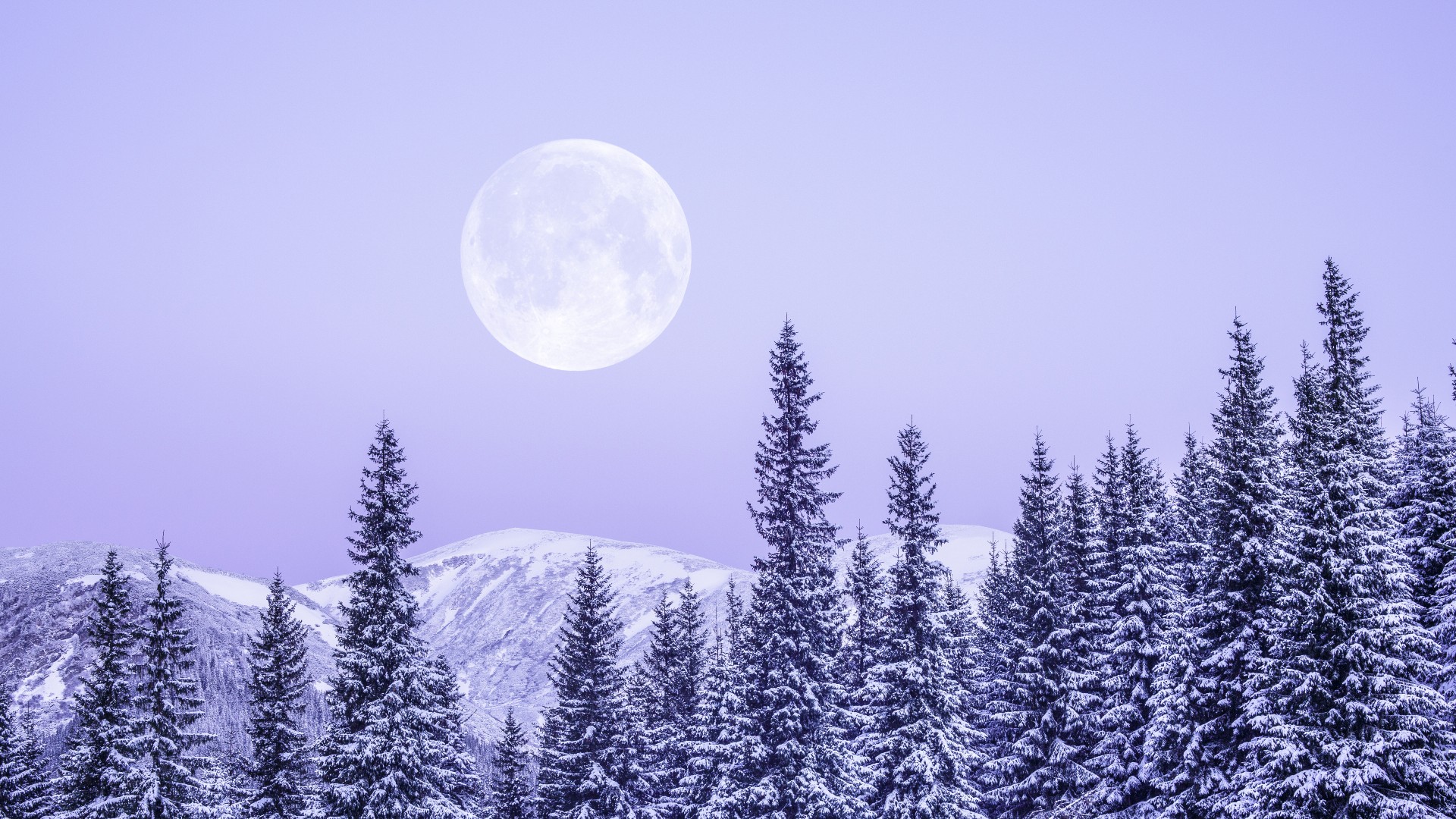January's full 'Wolf Moon' rises Thursday. Here's how to see it at its best.
The first full moon of 2024, sometimes nicknamed the Wolf Moon, will rise into winter skies this week, appearing bright and full from Wednesday to Friday.

This month's full moon, known as the Wolf Moon, will be at its fullest on Thursday, Jan. 25 and will shine in the constellation Cancer. The moon will also appear bright and full on Wednesday (Jan. 24) and Friday (Jan. 26).
According to Timeanddate.com, the Wolf Moon gets its name, which is thought to have European origin, from the howling wolves in the early part of the year. Other names for January's full moon include the Stay Home Moon, Quiet Moon, Severe Moon and Center Moon. Anishinaabeg, or Ojibwe, Indigenous people of the Great Lakes region know it as Minado Giizis or the Spirit Moon, according to the Center for Native American Studies.
From North America, the best time to watch the full moon will be Thursday, when it will rise in the east very close to sunset. Check the moonrise and moonset times for your location, and find a place with a low view of the eastern horizon.
There's something unusual about this year's Wolf Moon. It takes about 29.5 days for the moon to complete one cycle of moon phases (from new moon to new moon). Within that period, there are, on average, 7.4 days between its four phases: new moon, first-quarter moon, full moon and last-quarter moon. According to Timeanddate, there will be precisely 8.225 days between the full Wolf Moon on Jan. 25 and the third-quarter moon on Feb. 2, making it the most prolonged moon phase in 2024.
The reason is the moon's elliptical orbit around Earth, which means the moon is always at a slightly different distance from Earth. That, combined with the fact that the moon oscillates, means that no one orbit of the moon around Earth is the same.
After the Wolf Moon, the next full moon will be the Snow Moon, on Feb. 24.
If you're looking to get into skywatching and astronomy, we have plenty of guides to help you get started. If you want to view the night sky, then our best binoculars for stargazing and best telescopes guides have you covered, while the best astrophotography cameras will let you capture those spectacular views for others to enjoy.
Sign up for the Live Science daily newsletter now
Get the world’s most fascinating discoveries delivered straight to your inbox.

Jamie Carter is a freelance journalist and regular Live Science contributor based in Cardiff, U.K. He is the author of A Stargazing Program For Beginners and lectures on astronomy and the natural world. Jamie regularly writes for Space.com, TechRadar.com, Forbes Science, BBC Wildlife magazine and Scientific American, and many others. He edits WhenIsTheNextEclipse.com.









